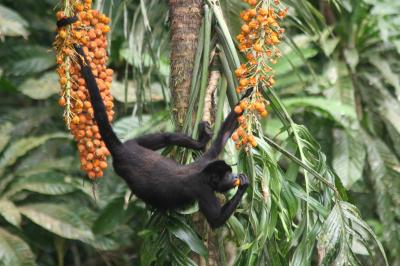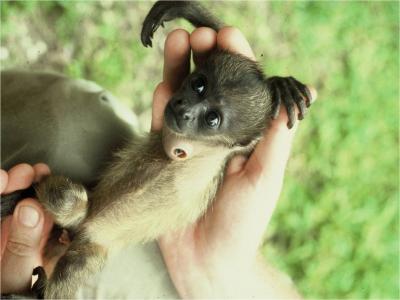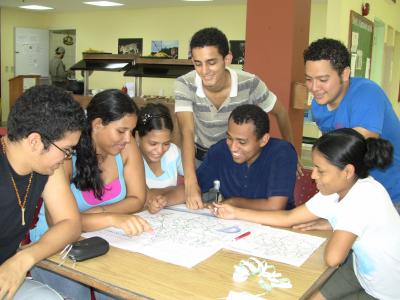The fifth Howler Monkey census at the Smithsonian’s Barro Colorado Island research station in Panama, organized by Katie Milton, professor in the department of Environmental Science, Policy & Management at the University of California, Berkeley, revealed that monkey numbers have not changed significantly since the first census 33 years ago.
Long before dawn on March 19 and 20, Katie Milton and a group of stalwart volunteers, each armed with flashlight and compass, spread out into the jungle to find 35 predetermined listening stations marked on their maps of the island.
Just before sunrise, howler monkeys launch into a chorus of howls, roars and barks. From 5:15 am until 6:30 am, each volunteer recorded the time and direction of these vocalizations and estimated the distance to each group that they could hear from their stations. As they walked back to the lab in the early morning light they noted locations of any monkey groups they saw.
About the image above: Howler Monkey Eating Astrocaryum Fruit. Image credit: Greg Willis, STRI.
“It amazes me that volunteers want to get up at 4 am to walk through the dark forest alone for an hour or more—but it is a thrill when they hear that first howl and know the dawn chorus is beginning,” said Katie Milton.
By multiplying the number of groups by the average number of individuals in a group—between 17 and 18 monkeys— she concluded that there are roughly 1200 individuals in fairly evenly spaced groups.
About the image above: Baby Howler Monkey with Bot Fly Lesion. An ongoing study of the cause of death of howler monkeys on Barro Colorado has identified the howler monkey bot fly Cuterebra baeri as the single most important factor. Very young monkeys are the most affected. Image credit: Katie Milton, STRI.
Census volunteers always include internationally known ecologists: Smithsonian staff scientists and visiting scientists as well as current students and fellows. Barro Colorado’s game wardens and two Panamanian national forest police manned some of the most inaccessible listening stations.
Eight highly-motivated students from the University of Panama arrived on the Island on March 18th to participate in a 2-day workshop on determining primate densities that included volunteering for the count.
About the image above: Eight University of Panama students participated in a pre-census workshop. Shown plotting the locations of howler groups on a map of BCI after the census are: David Natera, Karis Tunon, Darlene Mitre, Claudio Monteza, Luis Yepes, Orlando Ortiz Castillo, Anita Arcia Mendoza. (Jose Alejandro Ramirez Silva, not pictured, also participated.). Image credit: Katie Milton, STRI.
Milton organized the first island-wide group count in March, 1977. That census also revealed approximately 65 groups and thus, around 1200 monkeys.




2 comments on “1200 Howler Monkeys on Panama’s Barro Colorado Island”